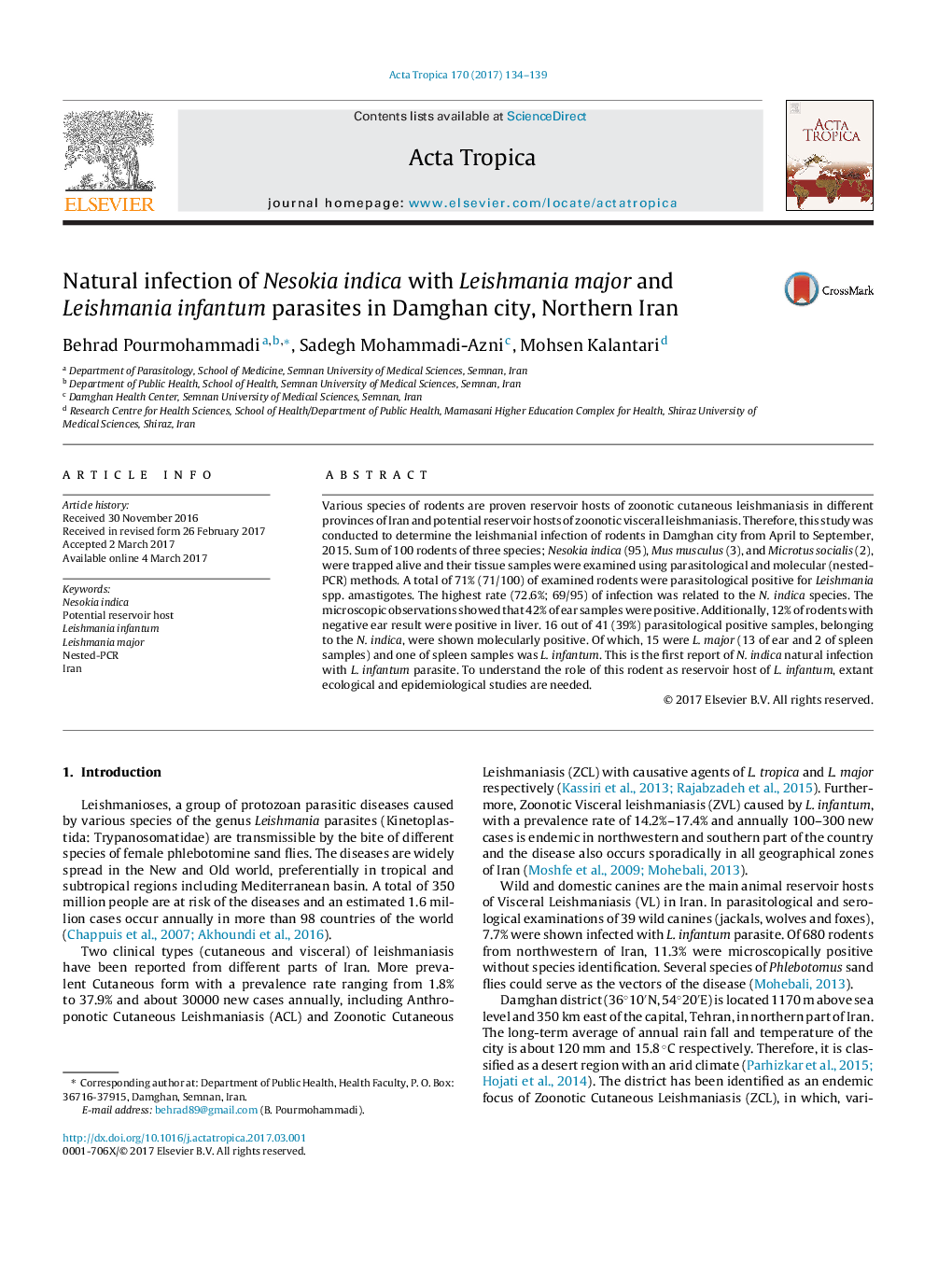| Article ID | Journal | Published Year | Pages | File Type |
|---|---|---|---|---|
| 5670800 | Acta Tropica | 2017 | 6 Pages |
Abstract
Various species of rodents are proven reservoir hosts of zoonotic cutaneous leishmaniasis in different provinces of Iran and potential reservoir hosts of zoonotic visceral leishmaniasis. Therefore, this study was conducted to determine the leishmanial infection of rodents in Damghan city from April to September, 2015. Sum of 100 rodents of three species; Nesokia indica (95), Mus musculus (3), and Microtus socialis (2), were trapped alive and their tissue samples were examined using parasitological and molecular (nested-PCR) methods. A total of 71% (71/100) of examined rodents were parasitological positive for Leishmania spp. amastigotes. The highest rate (72.6%; 69/95) of infection was related to the N. indica species. The microscopic observations showed that 42% of ear samples were positive. Additionally, 12% of rodents with negative ear result were positive in liver. 16 out of 41 (39%) parasitological positive samples, belonging to the N. indica, were shown molecularly positive. Of which, 15 were L. major (13 of ear and 2 of spleen samples) and one of spleen samples was L. infantum. This is the first report of N. indica natural infection with L. infantum parasite. To understand the role of this rodent as reservoir host of L. infantum, extant ecological and epidemiological studies are needed.
Related Topics
Life Sciences
Immunology and Microbiology
Parasitology
Authors
Behrad Pourmohammadi, Sadegh Mohammadi-Azni, Mohsen Kalantari,
